|
|
|
|
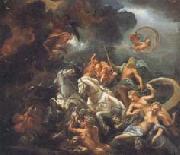 |
Livio Mehus
|
|
The Flemish artist (1627-1691) eclectic painter, author of landscapes, sacred objects, genre paintings and portraits embodies |
|
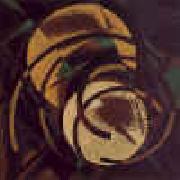 |
Ljubov Popova
|
|
Russian Constructivist Painter and Designer, 1889-1924
Through a synthesis of styles Popova worked towards what she termed painterly architectonics. Exploring firstly Impressionism, by 1913, in Composition with Figures, she was experimenting with the particularly Russian development of Cubo-Futurism: a fusion of two equal influences from France and Italy.
Portrait of a Philosopher (Artists's brother, Pavel Sergeyevich Popov), 1915From 1914-1915 her Moscow home became the meeting-place for artists and writers. In 1914-1916 Popova together with other avant-garde artists (Aleksandra Ekster, Nadezhda Udaltsova, Olga Rozanova) contributed to the two Jack of Diamonds exhibitions, then in Petrograd Tramway V and the 0.10, The Store in Moscow.
In 1916 she joined the Supremus group with Kazimir Malevich, the founder of Suprematism, Aleksandra Ekster, Ivan Kliun, Nadezhda Udaltsova, Olga Rozanova, Ivan Puni, Nina Genke, Ksenia Boguslavskaya and others who at this time worked in Verbovka Village Folk Centre. However there was a tension between those who like Malevich saw art as a spiritual quest and others who responded to the need for the artist to create a new physical world. Popova embraced both of these ideals but eventually identified herself entirely with the early aims of the Revolution working in poster, book design, fabric and theatre design, as well as teaching.
Her painting The Violin of 1914 reveals the development from cubism towards the "painterly architectonics" of 1917- 1918. Before joining the Supremus group her paintings, the architectonic series defined her artistic trajectory, quite distinct from that of Malevich, Rozanova, Tatlin and Mondrian, in abstract form. The canvas surface is an energy field of overlapping and intersecting angular planes in a constant state of potential release. At the same time the elements are held in a balanced and proportioned whole as if linking the compositions of the classical past to the future. By 1918 colour is used as the iconic focus; the strong primary colour at the centre drawing the outer shapes together.
In 1918 Popova married von Eding, and gave birth to a son, but von Eding died the following year of typhoid fever. She worked on Agitprop designs, and in 1919 she contributed to Tenth State Exhibition: Non Objective Creativity and Suprematism. She painted more advanced abstract works in 1919-21. In 1921 she exhibited in the 5 x 5 Exhibition.
From 1921-24 Popova became active in Constructivist projects, sometimes in collaboration with the architect Alexander Vesnin. She was active in stage designs: Vsevolod Meyerhold's production of Fernand Crommeldynck's The Magnanamous Cuckold, 1922; and in teaching: Spatial Force Constructions were used as the basis of an art teaching theory. She designed typography of books, production art and textiles, and contributed designs for dresses to LEF.
Popova died in Moscow. A large exhibition of her work opened in Moscow on 21 December 1924. |
|
|
|
 |
Lo Scheggia
|
|
Italian Early Renaissance Painter, 1406-1486 |
|
|
|
|
|
|
|
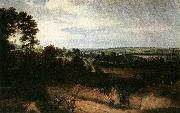 |
Lodewijk de Vadder
|
|
Lodewijk de Vadder (1605, Grimbergen - 1655, Brussels) was a Flemish Baroque landscape painter and engraver.
He became a master of Antwerp's Guild of St. Luke in 1628, and learned painting from his father and brothers. He specialized in landscapes with woods, in the manner of his contemporary Jacques d'Arthois and his pupil Lucas Achtschellinck[1]. They are usually referred to collectively as "The Sonian Forest Painters". |
|
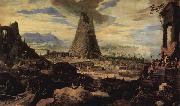 |
Lodewijk Toeput
|
|
(ca.1550, Antwerp - 1605, Treviso), was a Mannerist landscape painter active in Italy.
According to Karel van Mander who listed him as one of two painters from Northern Europe who he met in Venice, he was a good poet (rederijker) as well as a painter, who he thought came from Mechelen. Van Mander listed him with Dirck de Vries, a painter of kitchen pieces and fruit markets from Friesland. According to the RKD he was from Antwerp and spent most of his life in Treviso, Italy. He painted several historical allegories from the Bible and mythological themes from Metamorphoses. |
|
|
|
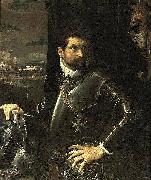 |
Lodovico Carracci
|
|
(21 April 1555 - 13 November 1619) was an Italian, early-Baroque painter, etcher, and printmaker born in Bologna.
Ludovico himself apprenticed under Prospero Fontana in Bologna and traveled to Florence, Parma, and Venice, before returning to his hometown. Along with his cousins Annibale and Agostino Carracci, Ludovico in 1585 was a founder and director (caposindaco) of the so-called Eclectic Academy of painting (also called the Accademia degli Incamminati), which in reality was a studio with apprenticed assistants. This studio however propelled a number of Emilian artists to pre-eminence in Rome and elsewhere, and singularly helped encourage the so-called Bolognese School) of the late 16th century, which included Albani, Guercino, Sacchi, Reni, Lanfranco and Domenichino. The Carracci had their apprentice draw studies focused on observation of nature and natural poses, and use a bold scale in drawing figures. Ludovico specifically helped train Giacomo Cavedone. The Carracci are credited with reinvigorating Italian art, especially fresco art, which was subsumed with formalistic Mannerism.
Carracci's own works are characterized by a strong mood invoked by broad gestures and flickering light that create spiritual emotion.
Ludovico Carracci died in Bologna in 1619.
|
|
|
|
 |
LOMBARD, Lambert
|
|
Flemish Northern Renaissance Painter, 1505-1566
Flemish painter, draughtsman, architect, humanist and numismatist. He belonged to the generation of artists who sought to revive Flemish painting by turning to the art of antiquity and the Italian Renaissance. However, because of his northern training, he assimilated his models with difficulty and produced a hesitant form of art, one that was academic and cold. He was nonetheless an important innovator in the Low Countries through his investigation of the forms and compositions of Classical art. |
|
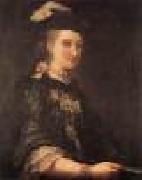 |
LONGHI, Alessandro
|
|
Italian painter, Venetian school (b. 1733, Venezia, d. 1813, Venezia).
Painter, engraver and writer, son of (1) Pietro Longhi. He must have received his first artistic training from his father, although the only evidence of this is the similarity of their styles. He was apprenticed to Giuseppe Nogari, one of the better Venetian portrait painters of the first half of the eighteenth century, and his earliest works are bust-length, mostly life-size portraits in Nogari's style. He first exhibited in 1757 and by 1758 must have been considered a reasonably established artist, |
|
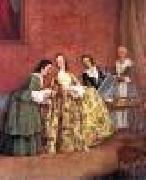 |
LONGHI, Pietro
|
|
Italian Rococo Era Painter, ca.1702-1785
Painter and draughtsman. His father, Alessandro Falca, encouraged his natural talent for drawing, and he studied under Antonio Balestra for 'several years', according to his son, Alessandro Longhi. Balestra probably took Pietro to Bologna and recommended him to Giuseppe Maria Crespi. No documents exist on Longhi until 1732, the year he married, and some doubt has been expressed about his study with Crespi. There is no trace of Crespi's influence in Longhi's altarpiece for the parish church of S Pellegrino in Bologna, St Pellegrino Condemned to Death, installed in 1732; Crespi's style is an intimate one, however, and would have been inappropriate for such a large altarpiece. One of Longhi's first independent works, the St Pellegrino altarpiece recalls his Venetian origins and training in its broken brushwork and colour glazes. In another early work, the Adoration of the Magi (Venice, Scuola Grande S Giovanni Evangelista), documented in 1733 as at S Maria Materdomini, Venice, the subject-matter lends itself to a more domestic treatment, and Crespi's influence is evident. Both these works contain passages anticipating Longhi's subsequent development as a genre painter; in each picture a boy or young man, perhaps a self-portrait, gazes out at the spectator, unconcerned with events in the painting. |
|
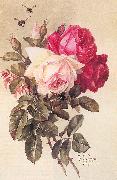 |
Longpre, Paul De
|
|
French, practiced mainly in America, 1855-1911
was a French flower painter, actively chiefly in the United States. He was born in Lyons, France, and was entirely self-taught. From his twelfth year he practiced successfully in Paris as a painter of fans. At 21 he first exhibited at the Salon. Having lost his money by the failure of a Paris bank, he moved in 1890 to New York and in 1896 held an exhibition of flower pieces which secured him instant recognition. In 1899 he moved to California and two years later built a beautiful house at Hollywood, which became celebrated for its magnificent flower gardens. De Longpre painted only perfect specimens of flowers; with delicacy of touch and feeling for bosoms he united scientific knowledge, and he also knew how to give expression to the subtle essence of the flowers. |
|
|
|
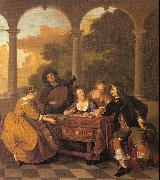 |
Loo, Jacob van
|
|
Flemish Baroque Era Painter, 1614-1670
was a Dutch painter and popularized around 1650 a close-focus concert on a loggia or terrace. So Van Loo became known for his conversation groupings with a subtle color palette, and according to Arnold Houbraken famous for his nudes. He was the founder of the Van Loo family of painters. Van Loo was born in Zeeland in the Dutch Republic. His father might have been a notary, but most time he is regarded as the son of a painter, Jan van Loo, who trained him. (As part of the city archives in Sluis have been destroyed during World War II it is impossible now to make out what is true). His early influences include Thomas de Keyser and Jacob Adriaensz Backer. In 1642, Jacob moved to Amsterdam, where his contemporaries included Rembrandt, Frans Hals, and Bartholomeus van der Helst. In 1643 he married the sister of the painter Martinus Lengele and had six children. They lived on Rozengracht, in the Jordaan and Eglon van der Neer became one of his pupils. In 1660, Van Loo fled the city after having fatally stabbed someone in his belly, during a fight in an inn. He was sentenced to death in absentia and was forever banned from the state of Holland. Van Loo settled in Paris, where he was admitted to the Acad??mie de peinture et de sculpture and where he died in 1670. Van Loo's work was done in the Baroque style, which had begun in Rome and which was becoming a Europe-wide phenomenon in this period. He was a major influence on Johannes Vermeer, when painting Diana and Her Companions. He painted portraits of Johan Huydecoper van Maarssenveen, his wife, his sister Leonara Huydecoper, married to Jan J. |
|
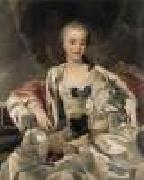 |
LOO, Louis Michel van
|
|
French painter (b. 1707, Toulon, d. 1771, Paris).
Painter, son of Jean-Baptiste van Loo. He trained with his father in Turin and Rome, later attending the courses of the Academie Royale in Paris. He received the institution's first prize for painting in 1726, and in 1728, accompanied by his brother, Francois, and his uncle, Carle, returned to Rome where he was associated with Francois Boucher. On his way back to France, he stayed for a time in Turin, painting portraits of the royal family of Sardinia, the Duke and Duchess of Savoy. In Paris he was admitted to membership of the Academie Royale and in 1735 was appointed assistant teacher at the Academie, becoming renowned as a specialist in portrait painting. Most of his portraits from this period are half-length, combining ideas from Hyacinthe Rigaud's later work with other more natural and innovative ones. On the death of Jean Ranc, Philip V of Spain asked Rigaud to suggest a substitute, and van Loo was proposed. He arrived in Madrid in 1737 and remained there as Pintor de la Corte until 1752, responding with modern aesthetic ideas to the demands of the Spanish monarchs for pomp and splendour. He carried out court commissions but devoted part of his time to teaching, his pupils often becoming studio assistants. He also took an active part in meetings held over a number of years to establish the Real Academia de Bellas Artes de S Fernando, for which he produced the canvas, the Education of Cupid by Venus and Mercury |
|
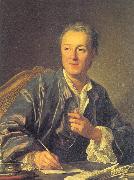 |
Loo, Louis-Michel van
|
|
Flemish active in France, 1707-1771
Painter, son of Jean-Baptiste van Loo. He trained with his father in Turin and Rome, later attending the courses of the Acad?mie Royale in Paris. He received the institution's first prize for painting in 1726, and in 1728, accompanied by his brother, Fran?ois, and his uncle, Carle, returned to Rome where he was associated with Francois Boucher. On his way back to France, he stayed for a time in Turin, painting portraits of the royal family of Sardinia, the Duke and Duchess of Savoy. In Paris he was admitted to membership of the Acad?mie Royale and in 1735 was appointed assistant teacher at the Academie, becoming renowned as a specialist in portrait painting. Most of his portraits from this period are half-length, combining ideas from Hyacinthe Rigaud's later work with other more natural and innovative ones. On the death of Jean Ranc, Philip V of Spain asked Rigaud to suggest a substitute, and van Loo was proposed. He arrived in Madrid in 1737 and remained there as Pintor de la Corte until 1752, responding with modern aesthetic ideas to the demands of the Spanish monarchs for pomp and splendour. He carried out court commissions but devoted part of his time to teaching, his pupils often becoming studio assistants. He also took an active part in meetings held over a number of years to establish the Real Academia de Bellas Artes de S Fernando, for which he produced the canvas, the Education of Cupid by Venus and Mercury |
|
|
|
|
|
|
|
 |
lorens pasch d. y
|
|
Lorens Pasch d.y., född 1733, död 1805, konstnär; professor vid Konstakademien från 1773. Son till Lorens Pasch d.ä., bror till Ulrika Pasch, brorsson till Johan Pasch. Invald tillsammans med sin syster i Konstakademien 1773. |
|
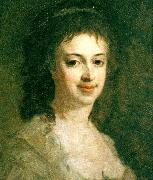 |
lorens pasch d.y
|
|
Lorens Pasch d.y., född 1733, död 1805, konstnär; professor vid Konstakademien från 1773. Son till Lorens Pasch d.ä., bror till Ulrika Pasch, brorsson till Johan Pasch. Invald tillsammans med sin syster i Konstakademien 1773. |
|
 |
Lorens Pasch the Younger
|
|
(1733-1805) was a Swedish painter
He grew up in an artistic family (he was the brother of Ulrika Pasch, alongside whom he was elected to the Art Academy in 1773), but his father Lorens Pasch the Elder wanted him to become a priest. He was thus sent to study in Uppsala aged 10. However, he decided on an artistic career after all and began an apprenticeship in his father's studio before going to Copenhagen, with introductions from his wealthy and influential uncle Johan Pasch. There he studied painting for three years in the studio of Carl Gustaf Pilo. Despite good offers of studio-apprenticeships and commissions from Sweden, he then set off for Paris in 1758 to complete his artistic education. There he specialised in history painting in the studios of Eustache Le Sueur and François Boucher (though for financial reasons he also continued his training in portraiture) and became friends with fellow-Swede Alexander Roslin.
In 1764 he left Paris and got back to Sweden in 1766. He fully completed his training in the studio of the French painter Guillaume Taraval, who in 1735 founded the Royal Swedish Academy of Arts in Stockholm. Soon after his arrival back in Sweden Pasch's gained a great reputation as a portraitist, gaining favour and commissions from the royal court and gaining the esteem of Adolf Frederick, King of Sweden and his queen Louisa Ulrika - one of his most notable works is his Portrait of Louisa Ulrika of Prussia. He served as a professor at the Academy of Arts from 1773 to his death, becoming its director on Pilo's death in 1793. At the end of his life he concentrated more on training young artists and managing the Academy than on painting. He died unmarried in 1805 and due to his powerful portraits remains one of the most respected painters of the Gustavian era in Sweden. |
|
|
|
 |
Lorenzo Costa
|
|
1460-1535
Italian
Lorenzo Costa Locations
Italian painter of the Ferrarese and Bolognese schools. Trained in the manner of such painters as Tura and Cossa, he modified the strident Ferrarese style when he became a partner of Francia. Among his paintings are the Madonna and Child with the Bentivoglio Family and the Triumphs of Petrarch in San Giacomo Maggiore, the Madonna with Saints in San Petronio, and the Madonna in San Giovanni in Monte, all in Bologna. His Three Saints is in the Metropolitan Museum. |
|
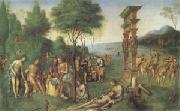 |
Lorenzo Costa
|
|
Bologna 1460-Mantua 1535
was an Italian painter of the Renaissance. He was born at Ferrara, but moved to Bologna by the his early twenties, and would be more influential to the Bolognese school of painting. However, many artists worked in both nearby cities, and thus others consider him a product of the School of Ferrara. There are claims that he trained with Cosimo Tura. In 1483 he painted his famous Madonna and Child with the Bentivoglio family, and other frescoes, on the walls of the Bentivoglio chapel in San Giacomo Maggiore, and he followed this with many other works. He was a great friend of Francesco Francia, who was much influenced by him. In 1509 he went to Mantua, where his patron was the Marquis Francesco Gonzaga, and he eventually died there. His Madonna and Child enthroned is in the National Gallery, London, but his chief works are at Bologna. His sons, Ippolito and Girolamo, were also painters, and so was Girolamo's son, Lorenzo the younger (1537-1583). |
|
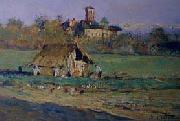 |
Lorenzo Delleani
|
|
(Pollone (Biella), 1840 - Turin, 1908) was an Italian painter.
A pupil of Cesare Gamba and Carlo Arienti at the Albertina Academy in Turin, Delleani worked initially in the field of history painting and received various marks of official recognition. He exhibited work at the Paris Salon of 1874 and gradually modernised his means of expression and range of subjects at the end of the decade with a new focus on landscape and painting from life. The early 1880s saw an exclusive focus on painting en plein air, capturing light in thick strokes of colour. His most frequent subjects were views of the Piedmontese and Lombard countryside in changing conditions of light and season. The artistes presentation of some 40 works at the Venice Biennale in 1905 and participation in the International Exhibition in Munich of the same year set the seal on his international success.
|
|
|
|
|
|
|
|
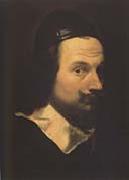 |
Lorenzo Lippi
|
|
1606-65
Italian painter and poet. He was trained by Matteo Rosselli, with whom he worked for many years in close partnership. His collaboration was sometimes anonymous but is documented from 1622, when they decorated the ceiling of the Sala della Stufa (Florence, Pitti), to 1631-2, when they worked together on lunettes portraying St Francis Adoring the Child and St Catherine in Prison (Florence, S Gaetano). In 1630 Lippi was enrolled in the Accademia del Disegno but appears not to have had his own workshop until after 1634, although he worked independently before then. The earliest paintings attributable to him are, both in facial types and in the soft, rich folds of the drapery, close in style to the work of Rosselli. Examples include canvases of the Apostles James, John and Matthew, and Christ Blessing (all 1628; Vaglia, S Pietro), and the Virgin Handing the Child to St Francis (1629; Florence, S Salvatore di Camaldoli). In the 1630s Lippi painted decorative and theatrical compositions, mainly on literary and biblical themes, which remained indebted to Rosselli, for example Samson and Delilah (1632; Stockholm, Nmus.) and the Virgin in Glory with Saints (1634; Ronta, nr Barberino di Mugello, S Michele). Shortly afterwards he produced works |
|
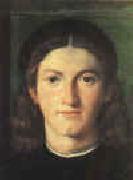 |
Lorenzo Lotto
|
|
Italian
1480-1556
Lorenzo Lotto Galleries
In this last period of his life, Lorenzo Lotto would frequently move from town to town, searching for patrons and commissions. In 1532 he went to Treviso. Next he spent about seven years in the Marches (Ancona, Macerata en Jesi), returning to Venice in 1540. He moved again to Treviso in 1542 and back to Venice in 1545. Finally he went back to Ancona in 1549.
This was a productive period in his life, during which he painted several altarpieces and portraits :
Santa Lucia before the Judge, 1532, Jesi, Pinacoteca comunale
The Sleeping Child Jesus with the Madonna, St. Joseph and St. Catherine of Alexandria, 1533, Bergamo, Accademia Carrara
Portrait of a Lady as Lucretia, 1533, National Gallery, London.
Holy Family with SS Jerome, Anna and Joachim, 1534, Firenze, Uffizi
Holy Family, ca 1537, Paris, Louvre
Portrait of a Young Man, Firenze, Uffizi
Crucifixion, Monte San Giusto, Church of S Maria in Telusiano
Rosary Madonna, 1539, Cingoli, Church of San Nicolo
Portrait of a Man, 1541, Ottawa, National Gallery of Canada
Bust of a Bearded Man, 1541, ascribed, San Francisco, Fine Arts Museum
The Alms of Saint Anthony, 1542, Venezia, church SS Giovanni e Paolo
Madonna and four Saints, 1546, Venezia, Church of San Giacomo dell??Orio
Portrait of fra?? Gregorio Belo da Vicenza, 1548,New York, Metropolitan Museum
Assumption, 1550, Ancona, church San Francesco alle Scale
The Crossbowman, 1551, Rome, Pinacoteca Capitolina
Portrait of an Old man, ascribed, ca 1552, Saint Petersburg, Ermitage
Presentation in the Temple, 1555, Loreto, Palazzo Apostolico
A Venetian woman in the guise of Lucretia (1533).At the end of his life it was becoming increasingly difficult for him to earn a living. Furthermore, in 1550 one of his works had an unsuccessful auction in Ancona. As recorded in his personal account book, this deeply disillusioned him. As he had always been a deeply religious man, he entered in 1552 the Holy Sanctuary at Loreto, becoming a lay brother. During that time he decorated the basilica of S Maria and painted a Presentation in the Temple for the Palazzo Apostolico in Loreto. He died in 1556 and was buried, at his request, in a Dominican habit.
Giorgio Vasari included Lotto's biography in the third volume of his book Vite. Lorenzo Lotto himself left many letters and a detailed notebook (Libro di spese diverse, 1538-1556), giving a certain insight in his life and work. Among the many painters he influenced are likely Giovanni Busi |
|
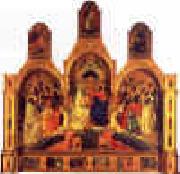 |
Lorenzo Monaco
|
|
Italian
c1370-c1424
Lorenzo Monaco Gallery
was a Florentine painter. He joined the Camaldolese monastery of Santa Maria degli Angeli in Florence in 1391, but he left monastic life before making a lifetime commitment. Despite this fact, he has traditionally been called "Lawrence the Monk." His work shows the influence of the International Gothic style of the late fourteenth century, as well as that of the Sienese school. |
|
|
|
|
|
|
|
|
|
 |
Losenko, Anton
|
|
Russian Painter, 1737-1773
Ukrainian painter, active in Russia. He trained (1753-8) under Ivan Argunov, and from 1758 he was a student at the recently founded Academy of Art in St Petersburg, where he later taught. From 1760 to 1769 he spent time in Paris, where he studied at the Acad?mie Royale de Peinture et de Sculpture under Jean Reteux (1692-1768) and Joseph-Marie Vien. He then studied in Rome. |
|
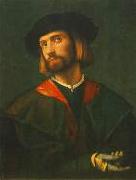 |
LOTTO, Lorenzo
|
|
Italian High Renaissance Painter, ca.1480-1556
Italian painter and draughtsman. He had a long and often prosperous career as a painter, and, although he travelled widely, his style retained a close affinity with the paintings of his native Venice. He was one of an outstanding generation of painters, including Giorgione, Titian, Palma Vecchio and Pordenone, who appeared in Venice and the Veneto during the first decade of the 16th century. In comparison with his contemporaries, Lotto was a fairly traditional painter in that he worked primarily in the long-established genres of altarpieces, devotional pictures and portraiture. Such paintings were popular in the Venetian provinces and the Marches where Lotto spent much of his career and where he often received more money for his commissions than he could obtain in Venice. His most important commissions were for altarpieces, and he is perhaps best known for a series of sacre conversazioni in which he skilfully varied the symmetrical groupings of figures found in earlier Venetian treatments of the subject by Giovanni Bellini and Alvise Vivarini. Precedents in Venice were also important for Lotto's early efforts in bust-length portraiture, but from 1525 he made a considerable contribution to the development of the three-quarter-length portrait. He painted many private devotional paintings but only a few of the historical, mythological or allegorical scenes that were popular in northern Italy in this period. Lotto is one of the best-documented painters of the 16th century: 40 autograph letters dating from 1524 to 1539, |
|
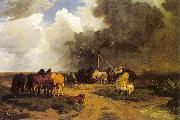 |
Lotz, Karoly
|
|
Hungarian Painter, 1833-1904
was a German-Hungarian painter. Karl Lotz was born in Bad Homburg vor der Höhe, Germany, the seventh and youngest surviving child of Wilhelm Christian Lotz and Antonia Höfflick. His father was a valet of Prince Gustav zu Hessen-Homburg at the time when the prince was representing Austria at the Congress of Vienna, which among other matters dealt with the House of Hessen-Homburg's rights of sovereignty over Hessen-Darmstadt. The sudden death of the young Baron von Sinclair, charge d'affaires, forced W. C. Lotz temporarily into the rôle. While in Hungary in 1815 he made the acquaintance of the 13-year-old Antonie Hoefflich, whom he married three years later. She gave birth to eight children, of whom Karl was the youngest. W. C. Lotz died in 1837 and Antonie moved the family to Pest (now that part of Budapest to the north of the River Danube). Karl attended the Piaristengymnasium, where, although Calvinist, he was awarded a scholarship for his exceptional academic performance. He began his artistic career as a pupil of the Hofkapellmeister Destouches, then in the academy of the Venetian master Jacopo Marastoni (1804-1860). Later he was a pupil of the historical painters Henrik Weber (1818-1866) in Budapest and Carl Rahl (1812-1865) in Vienna. Together with Rahl he worked on numerous commissions. Later he started on his own original works, first as a romantic landscape artist in scenes of the Alföld (the Hungarian lowland plain), and then as a creator of monumental murals and frescos in the style of the Venetian master Tiepolo. After various works in Budapest he became active in Vienna. He laid out plans for a grandiose palace, and completed murals commissioned by the Abbot of Tihany for his abbey church on the shore of Lake Balaton. He became known for his portraits and nudes, for which both his wife and his daughters (Katarina in particular) posed. Lotz found married bliss only at the age of 58, when he married the widow Jacoboy, the former wife of his brother Paul Johann Heinrich, who had died in 1828. From then on he signed his works Keroly Jacoboy-Lotz. In 1882 Lotz was appointed Professor at various art academies in Budapest, and in 1885 he became dean of a newly-established department for women painters. |
|
|
|
 |
Louis Anquetin
|
|
1861-1932,French painter. He came to Paris in 1882 and studied art at the Ateliers of Bonnat and Cormon, where he was a contemporary and friend of Henri de Toulouse-Lautrec, Emile Bernard and Vincent van Gogh. His early work shows the influence of Impressionism and of Edgar Degas. In 1887 Anquetin and Bernard devised an innovative method of painting using strong black contour lines and flat areas of colour; Anquetin aroused much comment when he showed his new paintings, including the striking Avenue de Clichy: Five O'Clock in the Evening (1887; Hartford, CT, Wadsworth Atheneum) at the exhibition of Les XX in Brussels and at the Salon des Independants in Paris in 1888. The new style, dubbed Cloisonnisme by the critic Edouard Dujardin (1861-1949), resulted from a study of stained glass, Japanese prints and other so-called 'primitive' sources; it was close to the Synthetist experiments of Paul Gauguin and was adopted briefly by van Gogh during his Arles period. Anquetin's works were shown alongside Gauguin's and Bernard's at the Caf? Volpini exhibition in 1889, |
|
|
|
|
|
|
|
 |
Louis Buvelot
|
|
Swiss-born Australian Painter
1814-1888
was a Swiss-born landscape painter who emigrated to Australia in 1865 and influenced the Heidelberg School of painters. Buvelot was born in Morges, Vaud, Switzerland, second son of Francois Simeon Buvelot, postal official, and his wife Jeanne-Louise nee Heizer, a school teacher. Louis Buvelot worked under Marc-Louis Arland at Lausanne, and from around 1834 continued his studies at Paris with Camille Flers, a well-known landscape painter of the day. After a few months there he migrated to Bahia, Brazil where he worked on his uncle's coffee plantation. In October 1840 Buvelot moved to Rio de Janeiro and attracted the notice of the emperor Dom Pedro II, who bought some of his pictures and decorated him with the Order of the Rose. In November 1843 Buvelot married Marie-Felicite, nee Lalouette (born 1816). Buvelot returned to Switzerland in 1852 and in 1856 was awarded a silver medal for a picture exhibited at Berne. |
|
|

